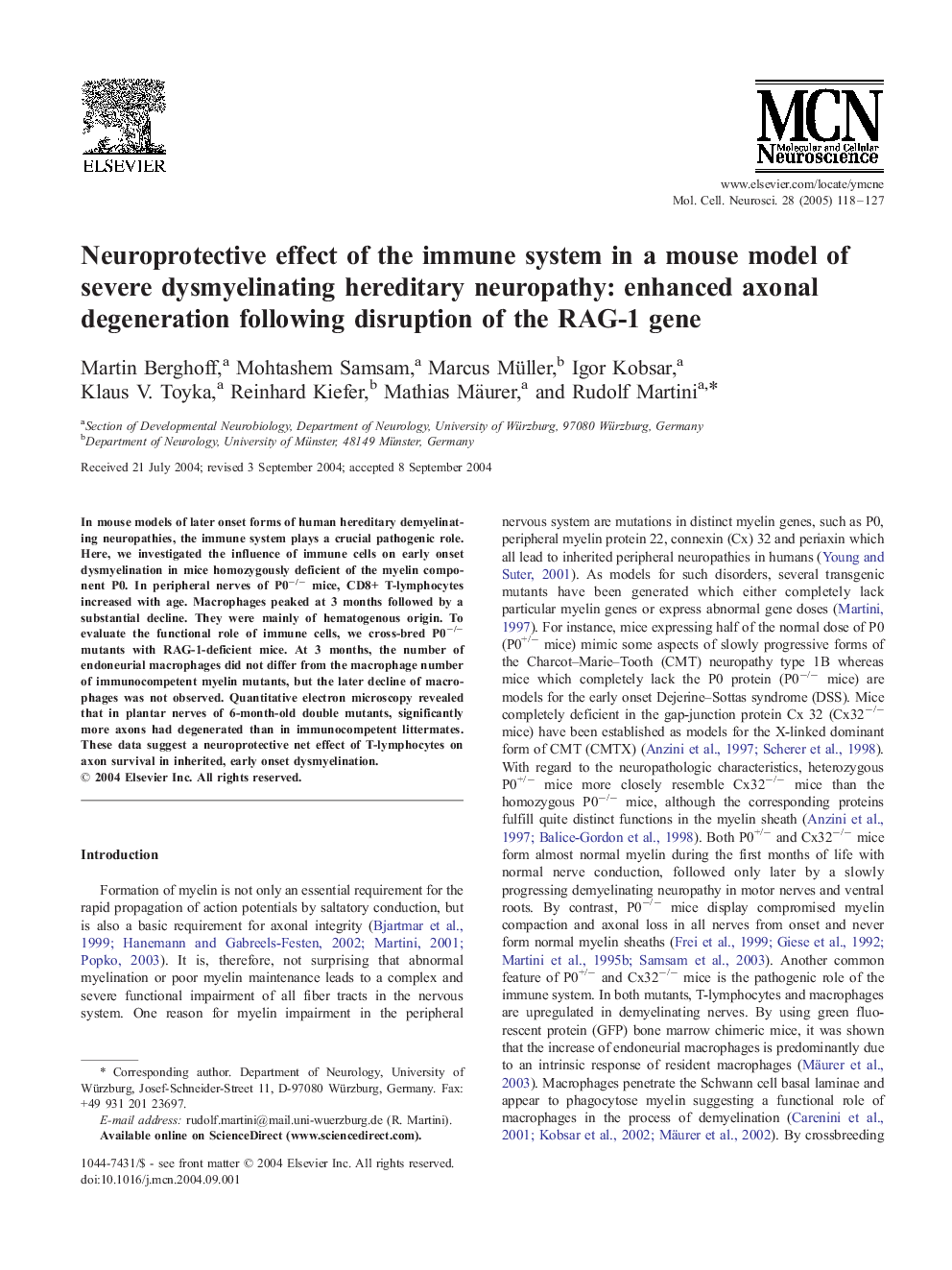| Article ID | Journal | Published Year | Pages | File Type |
|---|---|---|---|---|
| 10956933 | Molecular and Cellular Neuroscience | 2005 | 10 Pages |
Abstract
In mouse models of later onset forms of human hereditary demyelinating neuropathies, the immune system plays a crucial pathogenic role. Here, we investigated the influence of immune cells on early onset dysmyelination in mice homozygously deficient of the myelin component P0. In peripheral nerves of P0â/â mice, CD8+ T-lymphocytes increased with age. Macrophages peaked at 3 months followed by a substantial decline. They were mainly of hematogenous origin. To evaluate the functional role of immune cells, we cross-bred P0â/â mutants with RAG-1-deficient mice. At 3 months, the number of endoneurial macrophages did not differ from the macrophage number of immunocompetent myelin mutants, but the later decline of macrophages was not observed. Quantitative electron microscopy revealed that in plantar nerves of 6-month-old double mutants, significantly more axons had degenerated than in immunocompetent littermates. These data suggest a neuroprotective net effect of T-lymphocytes on axon survival in inherited, early onset dysmyelination.
Related Topics
Life Sciences
Biochemistry, Genetics and Molecular Biology
Cell Biology
Authors
Martin Berghoff, Mohtashem Samsam, Marcus Müller, Igor Kobsar, Klaus V. Toyka, Reinhard Kiefer, Mathias Mäurer, Rudolf Martini,
